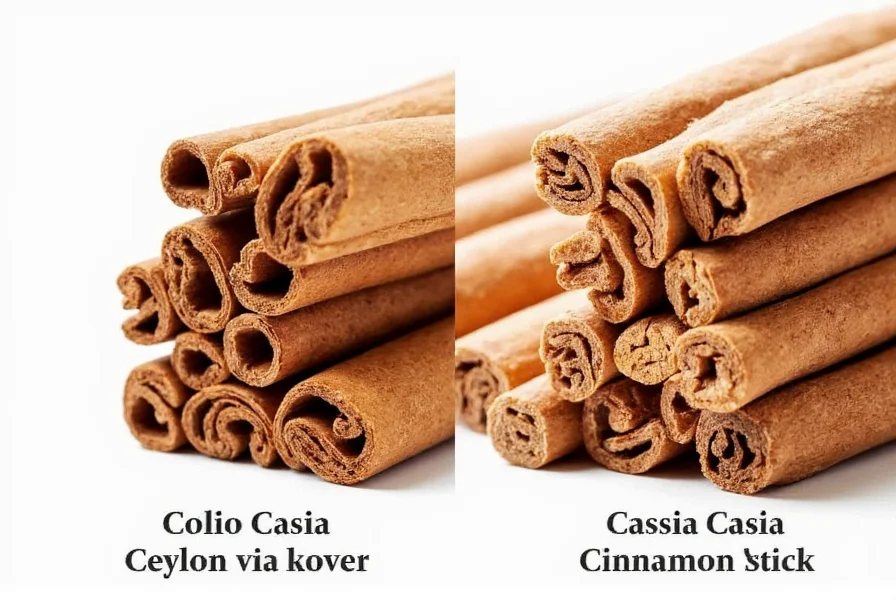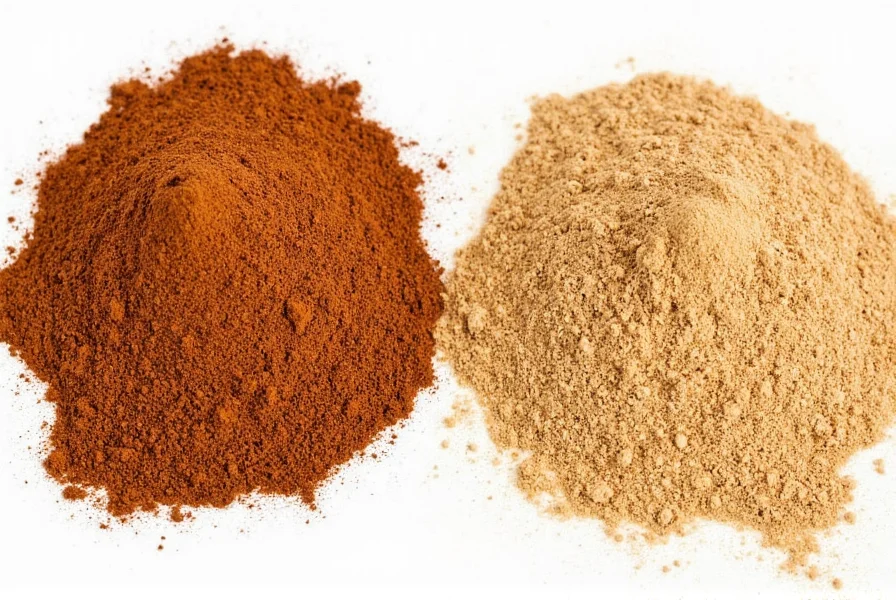When searching for ‘celon cinnamon,’ you’re likely looking for information about Ceylon cinnamon – a frequent misspelling of this premium spice. This comprehensive guide clarifies everything you need to know about authentic Ceylon cinnamon, including how it differs from regular cinnamon, its unique health properties, and practical usage tips.
What Exactly is Ceylon Cinnamon?
Ceylon cinnamon (Cinnamomum verum), often called ‘true cinnamon,’ originates from Sri Lanka (formerly Ceylon), where it’s been cultivated for centuries. Unlike the more widely available Cassia cinnamon, Ceylon cinnamon comes from a different species of tree and possesses distinctive characteristics that set it apart in both appearance and composition.
The most notable visual difference lies in the bark structure. Ceylon cinnamon forms multiple thin, papery layers that create a delicate, hollow tube, while Cassia cinnamon consists of a single thick, hard roll. This structural difference affects both texture and flavor profile, with Ceylon offering a more subtle, citrusy taste compared to Cassia’s stronger, spicier profile.

Ceylon vs. Cassia: Critical Differences You Should Know
Understanding the distinction between these two cinnamon varieties is crucial for both culinary applications and health considerations. The most significant difference lies in their coumarin content – a naturally occurring compound that can be harmful in large quantities.
| Characteristic | Ceylon Cinnamon | Cassia Cinnamon |
|---|---|---|
| Scientific Name | Cinnamomum verum | Cinnamomum cassia |
| Origin | Sri Lanka | China, Indonesia, Vietnam |
| Coumarin Content | Approximately 0.017g/kg | Approximately 6.97g/kg |
| Bark Structure | Multiple thin, fragile layers | Single thick, hard layer |
| Flavor Profile | Mild, sweet, citrus notes | Strong, spicy, intense |
Health Implications: Why the Coumarin Difference Matters
Coumarin, present in much higher concentrations in Cassia cinnamon, has been linked to potential liver toxicity when consumed in large amounts over time. The European Food Safety Authority established a tolerable daily intake of 0.1mg of coumarin per kilogram of body weight. For an average adult, this means:
- Cassia cinnamon: Just 1-2 teaspoons could exceed safe daily limits
- Ceylon cinnamon: You would need to consume significantly larger amounts to reach concerning levels
This makes Ceylon cinnamon the preferred choice for individuals who use cinnamon regularly, particularly those with liver conditions or who consume cinnamon in therapeutic amounts. However, both varieties contain beneficial compounds like cinnamaldehyde, which contributes to cinnamon’s potential health benefits.
Evidence-Based Health Benefits of Ceylon Cinnamon
Research suggests Ceylon cinnamon may offer several health benefits, though it’s important to note that many studies use concentrated extracts rather than culinary amounts:
- Blood sugar regulation: Some clinical trials indicate cinnamon may improve insulin sensitivity, though results vary between studies
- Antioxidant properties: Contains polyphenols that combat oxidative stress
- Anti-inflammatory effects: May help reduce inflammation markers in the body
- Heart health support: Preliminary research suggests potential benefits for cholesterol levels
It’s crucial to understand that while these potential benefits are promising, cinnamon should not replace medical treatment for conditions like diabetes. Most health benefits observed in studies used concentrated extracts, not the small amounts typically used in cooking.
How to Identify Authentic Ceylon Cinnamon
Unfortunately, many products labeled as ‘cinnamon’ actually contain Cassia. Here’s how to ensure you’re getting genuine Ceylon cinnamon:
- Examine the quills: Look for multiple thin, papery layers that form a delicate, hollow tube (like a cigar)
- Check the color: Ceylon has a lighter tan color compared to Cassia’s reddish-brown
- Smell and taste: Ceylon has a more subtle, sweeter aroma with citrus notes
- Read labels carefully: Look for ‘Cinnamomum verum’ or ‘Ceylon cinnamon’ specifically
- Consider the price: Authentic Ceylon is typically more expensive due to lower production volumes

Culinary Applications: Making the Most of Ceylon Cinnamon
Ceylon cinnamon’s delicate flavor shines in applications where its subtlety won’t be overwhelmed:
- Beverages: Perfect for coffee, hot chocolate, and chai where its citrus notes enhance without dominating
- Desserts: Ideal for custards, puddings, and delicate pastries where strong spices would overpower
- Fruit dishes: Complements apples, pears, and tropical fruits beautifully
- Breakfast foods: Excellent in oatmeal, yogurt, and smoothies
- Savory applications: Works well in Moroccan tagines and certain rice dishes
Because of its more delicate flavor, you might need to use slightly more Ceylon cinnamon than Cassia to achieve the same level of spiciness in recipes. When substituting, use about 1.5 times the amount of Ceylon for Cassia.
Storage Recommendations for Maximum Freshness
To preserve Ceylon cinnamon’s delicate flavor compounds:
- Store in an airtight container away from light and heat
- Whole quills retain freshness longer than ground cinnamon (up to 2 years vs. 6-12 months)
- Consider freezing in an airtight container for extended storage
- Grind only what you need for immediate use for optimal flavor
Frequently Asked Questions
Is Ceylon cinnamon the same as ‘true cinnamon’?
Yes, Ceylon cinnamon (Cinnamomum verum) is considered ‘true cinnamon.’ It’s the original variety historically traded as cinnamon, distinguished from the more common Cassia cinnamon which comes from different tree species and has a stronger flavor and higher coumarin content.
Can I safely consume Ceylon cinnamon daily?
Yes, Ceylon cinnamon’s significantly lower coumarin content (approximately 0.017g/kg compared to Cassia’s 6.97g/kg) makes it safe for regular consumption. Most adults can safely consume 1-2 teaspoons daily without concern, though individual tolerance may vary. Those with liver conditions should consult their healthcare provider.
How can I tell if my cinnamon is Ceylon or Cassia?
Examine the quills: Ceylon forms multiple thin, papery layers creating a delicate, hollow tube, while Cassia consists of a single thick, hard roll. Ceylon has a lighter tan color and more delicate, sweet-citrus flavor compared to Cassia’s darker, reddish-brown color and stronger, spicier taste. Check product labels for ‘Cinnamomum verum’ or ‘Ceylon cinnamon’ specifically.
Does Ceylon cinnamon lower blood sugar?
Some clinical studies suggest cinnamon may improve insulin sensitivity and help regulate blood sugar, but results are mixed and most research uses concentrated extracts rather than culinary amounts. While Ceylon cinnamon contains beneficial compounds like cinnamaldehyde, it should not replace medical treatment for diabetes. Consult your healthcare provider before using cinnamon therapeutically for blood sugar management.
Where can I buy authentic Ceylon cinnamon?
Look for specialty spice retailers, health food stores, or reputable online merchants that specifically label their product as ‘Ceylon cinnamon’ or ‘Cinnamomum verum.’ Sri Lankan brands are most likely to offer authentic product. Check for certifications like USDA Organic or Fair Trade, and examine product images to verify the characteristic multiple thin quills rather than a single thick roll.











 浙公网安备
33010002000092号
浙公网安备
33010002000092号 浙B2-20120091-4
浙B2-20120091-4